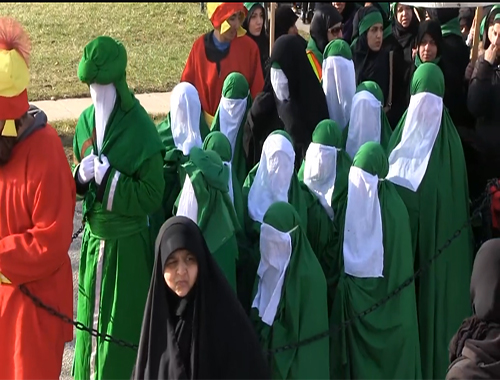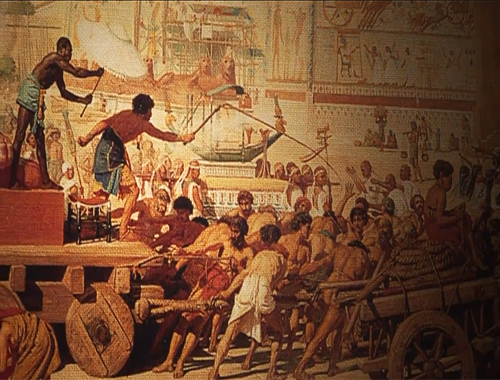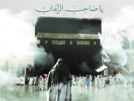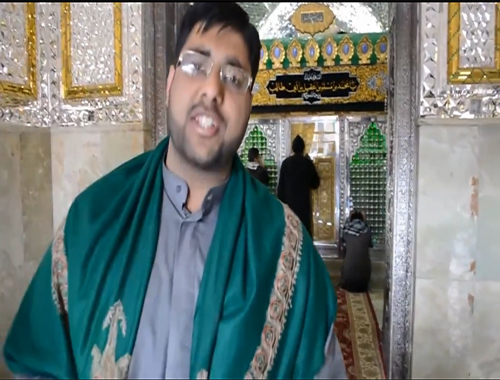Significance of Hajj
- Details
- Hits: 3017
Significance of Hajj
Hajj as an obligatory act of worship (Ibadat) means to visit the Kaa'ba in Makkah on the specified dates in the month of Thul-Hijjah and perform the religious rites in accordance with the Islamic Laws.
Obligation of Hajj
Any man or woman, who fulfills the following qualifications, has a religious obligation (Hajjatul Islam or Wajib Hajj) to perform Hajj once in a lifetime.
1. Must have attained puberty (Baligh/Bulugh), girls 9 years of age and boys 15 years of age.
2. Must be A'Aaqil, means being sane and of sound mind.
3. Must be free from bondage.
4. Must be healthy.
5. Must have enough time to travel to Makkah and perform Hajj within the required days.
6. Must have enough funds (Istita'ah) for traveling and for all Hajj expenses, as well as enough money to leave behind or be able to make a living on his return to maintain himself and his dependants during Hajj and after it.
If he has dependents, he must be able to maintain himself and his family. Upon his return, he must have enough means to maintain himself and his family. The journey to Hajj and returning from it must not involve any danger to the security of his life, wealth and family. One intending to go to Hajj must be healthy.
If he is infirm or old or has any other justifiable excuse Hajj would not be Wajib, though if other conditions were fulfilled, however, he must send someone as his Naib (agent representative). Ample time must be there for one to prepare to go to Hajj, and to perform all the obligatory acts. If other conditions of Hajj are met, while time is limited or extraordinary effort is involved, one has to keep the money unused until the following year for the purpose.
Performance of Hajj is WAJIB-E-FAURI. When above conditions are fulfilled, Hajj becomes Wajib immediately. To postpone it without any reasonable excuse is among the major sins. Hajj must be performed in the same year of Istita'ah, and it continues to remain obligatory in the ensuing years as long as it has not been performed.
Types of Hajj
There are three kinds of Hajj:
1. Hajj-e-Tamattu (Advantageous Hajj). This is commonly known as Wajib Hajj and will be dealt with in detail. In Hajj-e-Tamattu, Umrah is performed before the Hajj. The pilgrim removes Ihraam after Umrah on the 8th of Thul-Hijjah and re-enters into the state of Ihraam again for Hajj.
2. Hajj-e-Ifrad/Mufrad (Individual Hajj). All conditions of the Hajj-e-Ifrad/Mufrad are same. One enters into the state of Ihraam for Hajj only and Umrah can be performed after the Hajj.
3. Hajj-e-Qiran (Combined Hajj). This is applicable only to persons who are resident within a radius of 16 Farsakh or 88 km Sharii of Makkah (Each Farsakh is about 5.5 km). In this Hajj, the pilgrim enters into the state of Ihraam for both Hajj and the Umrah at one time.
Miqats
Any man or woman, who fulfills the following qualifications, has a religious obligation (Hajjatul Islam or Wajib Hajj) to perform Hajj once in a lifetime.
1. Must have attained puberty (Baligh/Bulugh), girls 9 years of age and boys 15 years of age.
2. Must be A'Aaqil, means being sane and of sound mind.
3. Must be free from bondage.
4. Must be healthy.
5. Must have enough time to travel to Makkah and perform Hajj within the required days.
6. Must have enough funds (Istita'ah) for traveling and for all Hajj expenses, as well as enough money to leave behind or be able to make a living on his return to maintain himself and his dependants during Hajj and after it.
If he has dependents, he must be able to maintain himself and his family. Upon his return, he must have enough means to maintain himself and his family. The journey to Hajj and returning from it must not involve any danger to the security of his life, wealth and family. One intending to go to Hajj must be healthy.
If he is infirm or old or has any other justifiable excuse Hajj would not be Wajib, though if other conditions were fulfilled, however, he must send someone as his Naib (agent representative). Ample time must be there for one to prepare to go to Hajj, and to perform all the obligatory acts. If other conditions of Hajj are met, while time is limited or extraordinary effort is involved, one has to keep the money unused until the following year for the purpose.
Performance of Hajj is WAJIB-E-FAURI. When above conditions are fulfilled, Hajj becomes Wajib immediately. To postpone it without any reasonable excuse is among the major sins. Hajj must be performed in the same year of Istita'ah, and it continues to remain obligatory in the ensuing years as long as it has not been performed.
Types of Hajj
There are three kinds of Hajj:
1. Hajj-e-Tamattu (Advantageous Hajj). This is commonly known as Wajib Hajj and will be dealt with in detail. In Hajj-e-Tamattu, Umrah is performed before the Hajj. The pilgrim removes Ihraam after Umrah on the 8th of Thul-Hijjah and re-enters into the state of Ihraam again for Hajj.
2. Hajj-e-Ifrad/Mufrad (Individual Hajj). All conditions of the Hajj-e-Ifrad/Mufrad are same. One enters into the state of Ihraam for Hajj only and Umrah can be performed after the Hajj.
3. Hajj-e-Qiran (Combined Hajj). This is applicable only to persons who are resident within a radius of 16 Farsakh or 88 km Sharii of Makkah (Each Farsakh is about 5.5 km). In this Hajj, the pilgrim enters into the state of Ihraam for both Hajj and the Umrah at one time.
Miqats

Miqats are specific places (appointed by Sharia) in Saudi Arabia, on the way to Makkah, which a pilgrim cannot cross without first wearing Ihraam.
1. Dhul-Hulaifa in the North (or commonly known as Masjid-e-Shajarah/Abar Ali). This is the Miqat, used by pilgrims who first go to Medina. It is about 7 km from city of Medina on the way to Makkah.
2. Al-Johfa in the North-West for those going to Makkah from Jeddah. (Or, if it is difficult to go to Masjid-e-Johfa because of a valid reason, one can go to Rabigh, which is Mahaz-e-Miqat (in line of Miqat) and put on Ihraam there). It is about 115 Km from Jeddah on the way to Medina. Pilgrims arriving from Egypt, Syria and Southern Africa are required to enter into the state of Ihraam at this place.
3. Zat Irq in the North-East. Located about thirty miles from Makkah, the pilgrims coming from Iraq and by land from the eastern side enter into the state of Ihraam at this place.
4. Qarn al-Manazil, located about 40 miles to the East of Makkah, the Pilgrims arriving from Yemen and by sea enter into the state of Ihraam at this place.
5. Yalamlam in the South-East, which is the Miqat for those who come via the Yemen.
6. Taneem (Masjid-e-Umra), this place is near Makkah and acts as Miqat for people living in Makkah. If someone is living in Makkah and wants to perform Umra then he should go to this place, enter into the state of Ihraam and then return to Makkah so that the condition of traveling for the pilgrims is also fulfilled. The Holy Prophet (S.A.W.) has said: "Part of the worship of Hajj and Umra is to travel in the way of Allah and to go out of the city."
Ihraam on the Airplane
Since Jeddah is not identified as one of the prescribed Miqats nor Mahaz-e-Miqat, it is, therefore, not sufficient to put on Ihraam in Jeddah. If one wishes to travel to Makkah from Jeddah then Ihraam has to be worn by NAZR in one's own country or in the Airplane at a distance approximately one hour before reaching Jeddah. In this case, one will have to pay KAFFARA (for gents only) for traveling under shade. Nazr should be made in this manner:
Allah has the right over me that I should become Muhrim from here.











